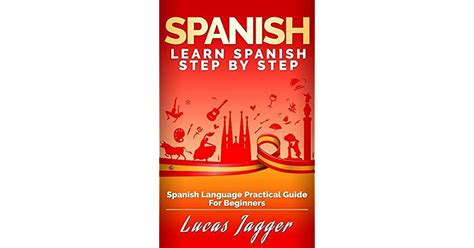Are you ready to embark on a linguistic adventure and try out Spanish? This comprehensive guide will provide you with a step-by-step plan to help you achieve fluency. Whether you’re a complete beginner or looking to brush up on your skills, this guide has everything you need to succeed.

Dive Into the Basics
Start with Pronunciation
Mastering pronunciation is crucial. Listen to native speakers and practice pronouncing words and phrases correctly. Use online resources or language apps to guide you.
Build a Strong Vocabulary
Start with basic words and phrases, gradually expanding your vocabulary. Use flashcards, apps, or online dictionaries to learn new words daily.
Study Spanish Grammar
Understand the structure of the language. Learn about verb conjugations, tenses, and sentence construction. Online courses or textbooks can provide a systematic approach.
Enhance Your Communication Skills
Learn to Listen
Immerse yourself in Spanish audio and video content. Listen to podcasts, watch movies, or engage in conversations with native speakers.
Practice Speaking
Find opportunities to practice speaking Spanish. Join language exchange groups, take online classes, or hire a tutor. Be patient and don’t be afraid to make mistakes.
Improve Your Reading Skills
Read Spanish articles, books, or news websites. Use a dictionary to look up unfamiliar words. Focus on understanding the main ideas and gradually increase the difficulty of texts.
Develop Your Writing Abilities
Practice writing in Spanish regularly. Use online tools or workbooks to improve your grammar and sentence structure. Get feedback from native speakers or language teachers.
Immerse Yourself in the Culture
Connect with Native Speakers
Attend local meetups, cultural events, or language classes where you can interact with native Spanish speakers.
Explore Spanish Media
Watch Spanish movies, listen to Spanish music, or read Spanish literature. Immerse yourself in the language and culture.
Travel to Spanish-Speaking Countries
There’s no better way to learn Spanish than to visit Spanish-speaking countries. Immerse yourself in the language and experience the culture firsthand.
Troubleshooting Common Mistakes
Overcoming Fear of Speaking
Don’t let fear hold you back. Embrace your mistakes as learning opportunities. Find a supportive environment where you can practice speaking confidently.
Avoiding False Cognates
Be aware of words that look or sound similar to English words but have different meanings in Spanish. Double-check translations to avoid misunderstandings.
Understanding Verb Tenses
Verb conjugation can be challenging. Practice using different tenses in various contexts. Use online resources or textbooks to clarify their usage.
Addressing Gender and Agreement
Spanish nouns and adjectives have gender. Ensure they agree in gender and number to avoid confusion. Pay attention to articles and endings to determine gender.
Tips for Continuous Learning
Set Realistic Goals
Don’t try to learn too much too quickly. Set achievable goals and celebrate your progress.
Stay Consistent
Consistency is key. Practice Spanish regularly, even for short periods. Daily exposure to the language will enhance your retention and progress.
Find a Study Buddy
Having a study partner can provide motivation and support. Encourage each other, share resources, and practice together.
Use Technology to Your Advantage
Leverage language-learning apps, online courses, and dictionaries. Technology can make learning more accessible and engaging.
Create Your Own Content
Writing or recording yourself speaking Spanish can help you identify areas for improvement. Share your content with others for feedback and encouragement.
Table 1: Benefits of Learning Spanish
| Benefit | Description |
|---|---|
| Increased Job Opportunities | Spanish is widely spoken in the United States and globally, expanding career prospects. |
| Enhanced Travel Experiences | Fluency in Spanish unlocks the ability to connect with locals and fully immerse in Spanish-speaking cultures. |
| Cognitive Benefits | Learning a new language improves memory, attention, and problem-solving skills. |
| Personal Growth | Mastering Spanish boosts confidence, expands perspectives, and fosters cultural appreciation. |
Table 2: Useful Spanish Vocabulary for Beginners
| Phrase | Translation |
|---|---|
| Hola | Hello |
| Buenos días | Good morning |
| Buenas tardes | Good afternoon/evening |
| Buenas noches | Good night |
| Gracias | Thank you |
| De nada | You’re welcome |
| ¿Cómo está? | How are you? (formal) |
| ¿Cómo estás? | How are you? (informal) |
| Bien, gracias | I’m fine, thank you |
| ¿Cuál es su nombre? | What is your name? |
| Me llamo… | My name is… |
| ¿De dónde es? | Where are you from? |
| Soy de… | I’m from… |
Table 3: Common Mistakes to Avoid in Spanish
| Mistake | Correction |
|---|---|
| Using “usted” instead of “tú” (informal you) | Use “tú” when speaking to friends, family, and people you know well. |
| Not using articles (el, la, los, las) | Articles are essential in Spanish; make sure to use them correctly. |
| Confusing “ser” (to be) and “estar” (to be in a state) | “Ser” describes permanent states, while “estar” describes temporary states. |
| Misusing prepositions (a, de, por) | Prepositions express relationships between words; make sure to use them correctly. |
| Incorrect verb conjugation | Practice verb conjugations to avoid errors in tense and person. |
Table 4: Tips for Fluent Spanish
| Tip | Description |
|---|---|
| Engage in regular conversation | Find opportunities to practice speaking with native speakers or language partners. |
| Read extensively | Immerse yourself in Spanish literature, news articles, and online content. |
| Listen to Spanish music and podcasts | Improve your listening comprehension and pronunciation. |
| Watch Spanish movies and TV shows | Subtitles can help initially, but gradually try to watch without them. |
| Use flashcards or apps to expand your vocabulary | Regularly review new words to build a strong vocabulary. |
